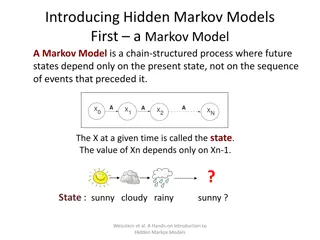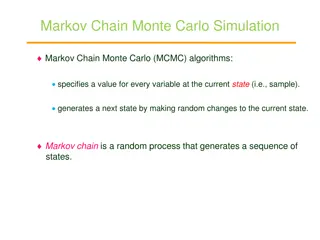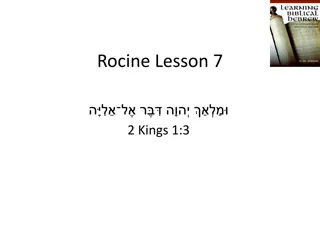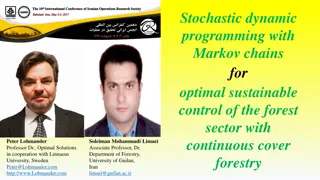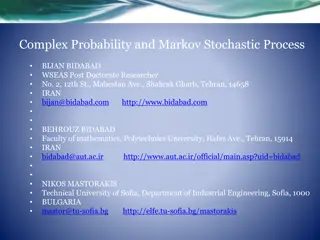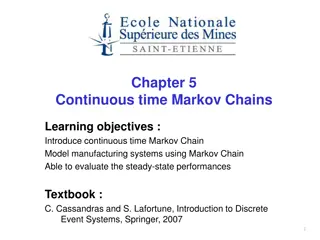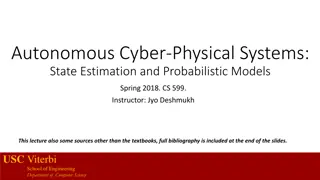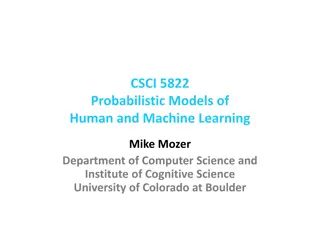
Markov Chains
Learn about absorbing and transient states in Markov Chains with examples and sample problems. Understand the concept of canonical form and how to analyze probabilities and absorption in a Markov Chain system.
Download Presentation

Please find below an Image/Link to download the presentation.
The content on the website is provided AS IS for your information and personal use only. It may not be sold, licensed, or shared on other websites without obtaining consent from the author. If you encounter any issues during the download, it is possible that the publisher has removed the file from their server.
You are allowed to download the files provided on this website for personal or commercial use, subject to the condition that they are used lawfully. All files are the property of their respective owners.
The content on the website is provided AS IS for your information and personal use only. It may not be sold, licensed, or shared on other websites without obtaining consent from the author.
E N D
Presentation Transcript
Markov Chains Part 3
Sample Problems Do problems 2, 3, 7, 8, 11 of the posted notes on Markov Chains
Will we get Pizza? Start with s = <1, 0, 0, 0, 0, 0>. Find s = s P n-times.
Transient vs Absorbing Definition: A state siof a Markov chain is called absorbing if it is impossible to leave it (i.e., pii= 1). Definition: A Markov chain is absorbing if it has at least one absorbing state, and if from every state it is possible to go to an absorbing state (not necessarily in one step). Definition: In an absorbing Markov chain, a state which is not absorbing is called transient.
Questions to Ask about a Markov Chain What is the probability that the process will eventually reach an absorbing state? What is the probability that the process will end up in a given absorbing state? On the average, how long will it take for the process to be absorbed? On the average, how many times will the process be in each transient state?
Canonical Form Consider an arbitrary absorbing Markov chain. Renumber the states so that the transient states come first. If there are r absorbing states and t transient states, the transition matrix will have the following canonical form. Here I is an r-by-r indentity matrix, 0 is an r-by-t zero matrix, R is a nonzero t-by-r matrix, and Q is an t-by-t matrix. The first t states are transient and the last r states are absorbing.
All Transient States will get Absorbed Theorem In an absorbing Markov chain, the probability that the process will be absorbed is 1. Equivalently, Qngoes to 0 as n goes to infinity. Verify this theorem (a) For the pizza delivery (b) for the drunkard walk
Fundamental Theorem Theorem For an absorbing Markov chain the matrix I Q has an inverse N and N = I + Q + Q2+ . The ij-entry nijof the matrix N is the expected number of times the chain is in state sj, given that it starts in state si. The initial state is counted if i = j. Definition For an absorbing Markov chain P, the matrix N = (I Q) 1is called the fundamental matrix for P
Fundamental Matrix Find the Fundamental Matrix for the Pizza Delivery process






